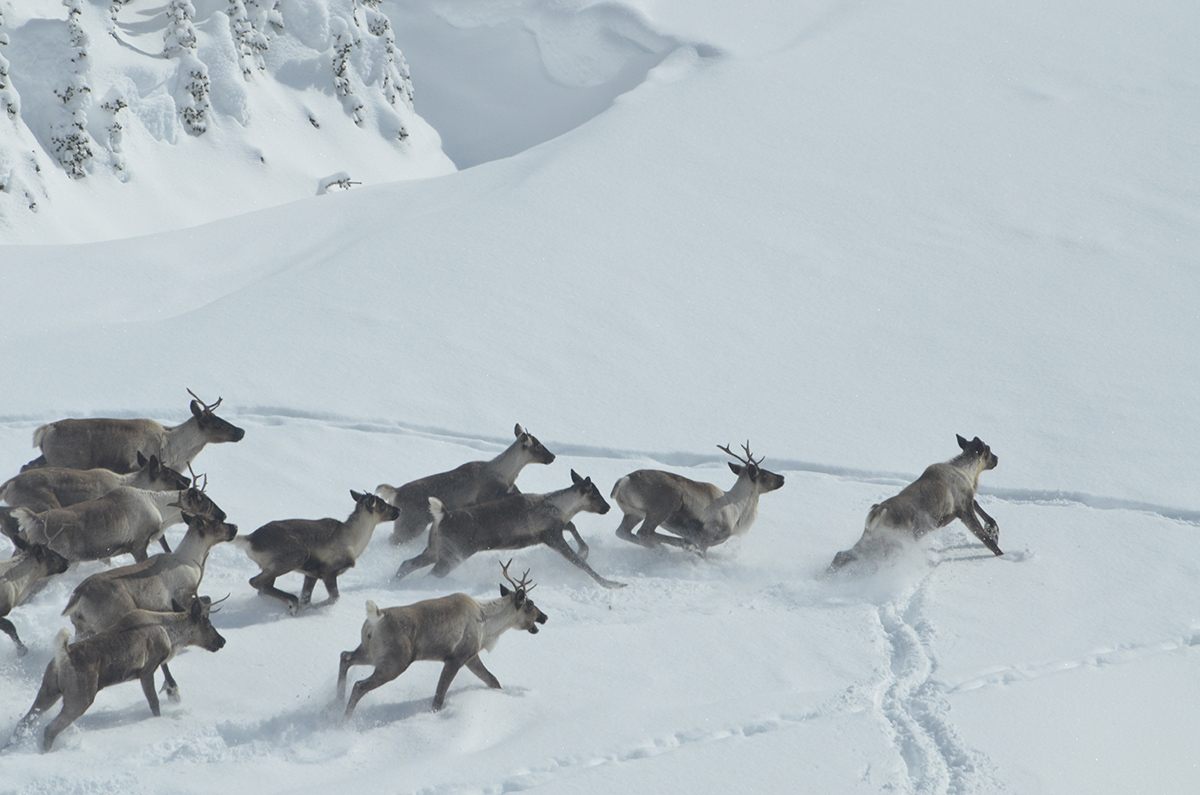
Mountain caribou such as those pictured here are in danger in North America. Photo credit: Robert Serrouya
The most effective way to save North America's dwindling caribou herds is to keep numbers of invading prey animals, like deer and moose, low, new UAlberta research reveals.
"Prey like moose and deer are expanding in numbers and range because of logging and climate change," explained Robert Serrouya, a postdoctoral fellow in biological sciences professor Stan Boutin's lab. White-tailed deer and moose flourish in shrubby environments with less tree cover, which are increasingly becoming the norm due to forestry practices.
Apparent competition
"More invasive prey species in turn increases predator numbers, such as wolves and cougars," said Serrouya. "Caribou, who are more susceptible to predators, bear the brunt of this increase in predators." This phenomenon, called "apparent competition," is on the rise in North America, with major impact on caribou herds. Of the 65 herds left, fewer than 10 have stable populations, with the remainder highly affected by apparent competition.
These interactions are extremely complex, and coming up with good management solutions using trial and error could take decades-and mistakes would be extremely difficult to rectify. But the plight of the caribou is urgent, driving Serrouya and colleagues to draw on theoretical models to predict what would happen under different options to recover caribou.
Avoiding extinction
Their results show that gradually reducing invading prey through hunting practices is the most effective option. Sudden decreases in invasive prey numbers would cause predators to switch to caribou, making the problem worse. Gradual reduction allows predator numbers to slowly and naturally decline to their original state.
"Mistakes in management practices can be catastrophic and they can last decades or even result in complete extinction," explained Serrouya. "Continued monitoring and evaluation paired with stable funding are critical elements for seeing this plan to fruition."
This research was awarded the Wildlife Society's award for Outstanding Article in September 2017. The manuscript is published in the American Naturalist.